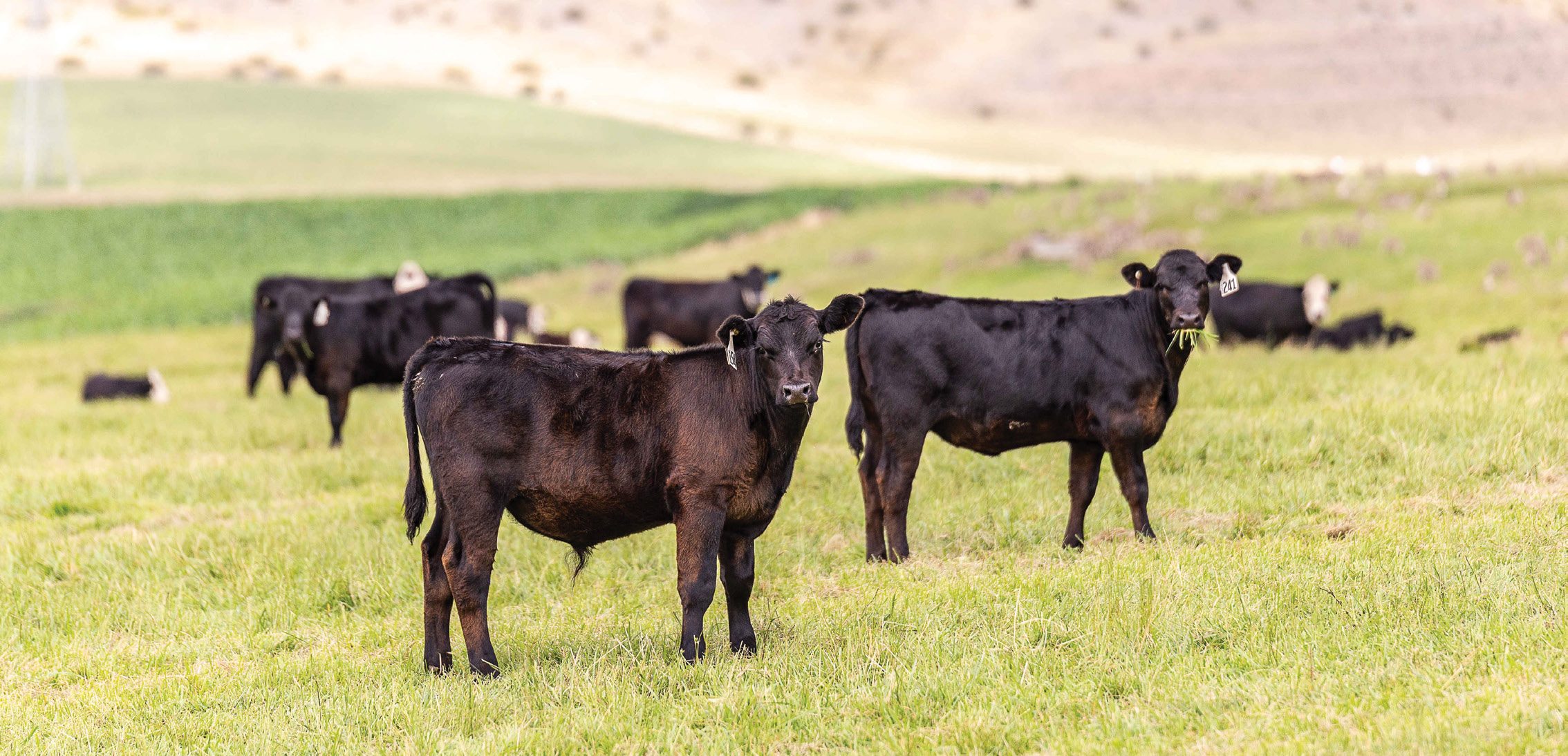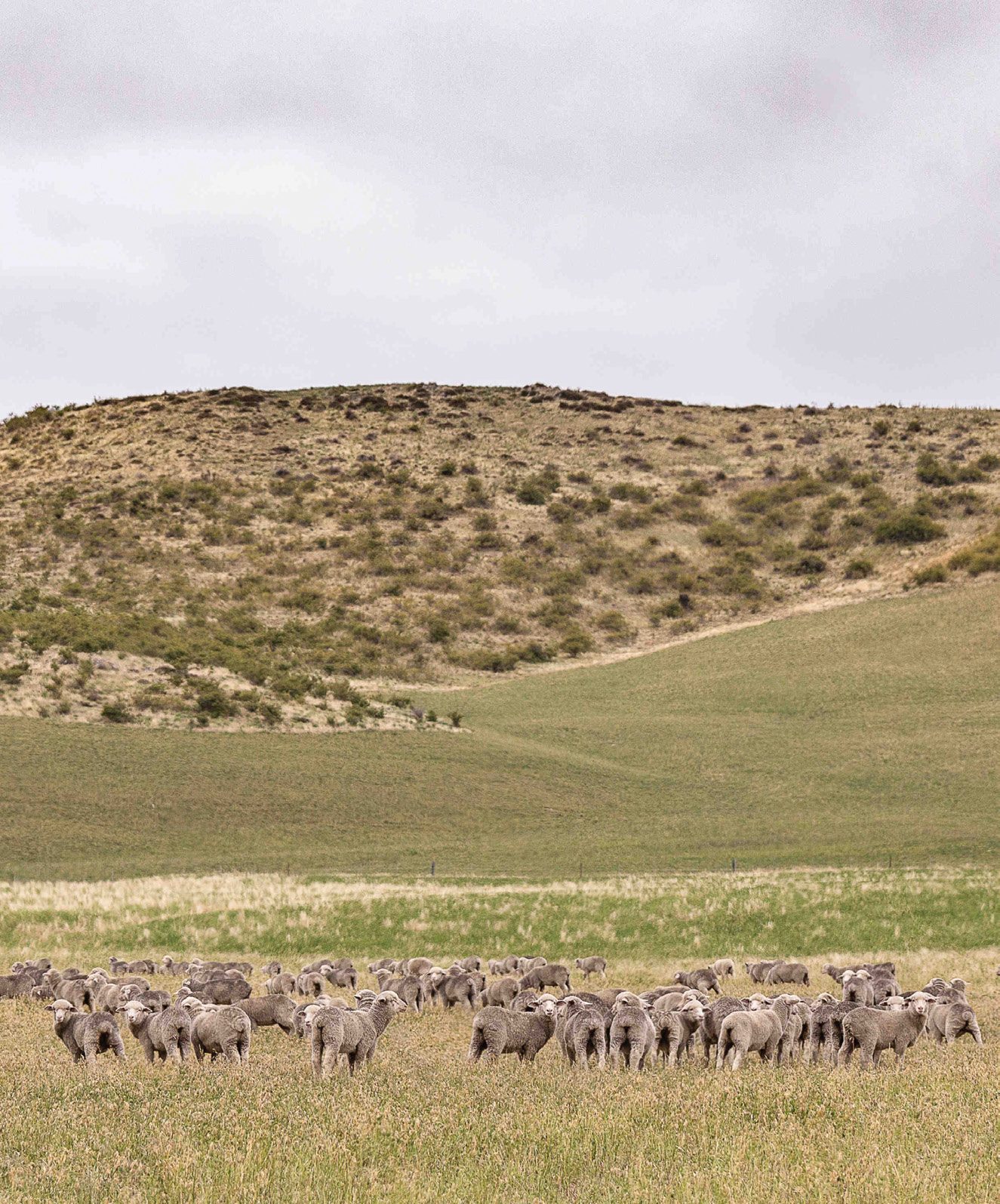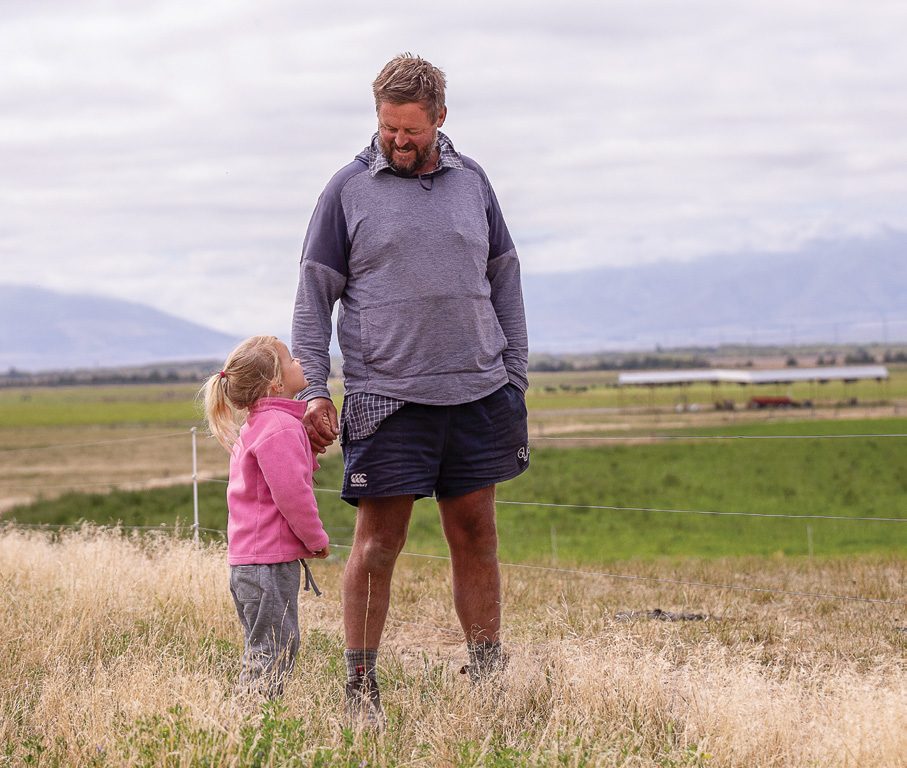Pasture for the big dry
Lucerne has proven its worth as pasture on a station in the Mackenzie Basin where rainfall is limited. Lynda Gray reports. Photos by Rachel Gillespie.

A lucerne-based pasture system makes the most of the available water and limited rainfall at Simons Hill.
“Lucerne drives our animal performance and that’s what our feed system is based on. We find that lucerne with fescue or cocksfoot in particular survive and provide shoulder season growth we couldn’t get with lucerne alone,” Glenn Fastier says.
Development of the lucerne-dominant pasture platform took almost two decades of trial and error. The initial motivation was to find companion grass and legume species that would survive and thrive longer than a year in the extreme climate. They came up with cocksfoot and fescue as the best grass options but struggled to find a compatible legume species. They were warned off lucerne, the advice being that it didn’t compete well with other pasture mix species and considered red and white clovers, subterranean clover, and various iterations. But none were successful, leading them back to lucerne.
What they settled for is a Savvy cocksfoot, and Titan 5 lucerne mix; and a Hummer fescue and Titan 5 mix both of which are grown alongside the existing pure lucerne swards.
“In our climate it works. We get good lucerne persistence and grass survival, seven to 12 years of decent legume content and most importantly good animal production.”
On the dryland a 5kg/ha lucerne and 2kg/ha cocksfoot; and 5kg/ha lucerne and 12kg/ha fescue mix is grown. On the irrigated country a mix of 6kg/ha lucerne and 8kg/ha fescue is used. All pastures are direct-drilled into ground chemically fallowed after three years of ryecorn.
Grazing management is skewed to maintain the lucerne and is altered according to the season. There is no set rotation length with stock put on and off so that the lucerne has plenty of time to recover. Glenn also likes to maintain a higher than normal sward height, grazing ewes and lambs on three to eight hectare blocks, usually break-fenced, for two to four day rotations. They’re moved on once most of the legume is eaten and the cows and calves follow to chew down the cocksfoot and fescue. The lucerne is left to flower every second year, seasonal conditions permitting.

Role of the breeding cow grows
The role of the breeding cows has grown in line with subdivision, irrigation and pasture development.
“Their job description has expanded, and they spend a lot of time grooming pastures for the Merino side of our operation,” Glenn says.
The Fastiers started with Angus-Hereford cows 14 years ago following comments from the Merino benchmarking group they belong to, that 50 beef cows could easily be grazed with no detrimental effect on the feed supply for sheep. They bought a nucleus of 50 breeding cows and have gradually increased the number to 270. This year the cows and 90 heifers were mated to Angus bulls. It’s likely that the number of cows will increase, and the ewe numbers held to provide greater flexibility during extreme seasons.
“It would give us more options. We could sell the steers at weaning, winter all the heifers and mate them. They could then be either sold in-calf or retained as once bred heifers.
The ryecorn is also an important part of the feeding system; it keeps growing so long as the temperature is 1deg or above and grows reliably in the shoulder seasons which can be extended further with ProGibb mixed with liquid nitrogen. About 50ha is established each year and a 150ha area, mostly on the dry land, supplements ewe hoggets in spring and autumn. Spraying out 50ha of the cereal crop in late spring to fallow in the lead up to lucerne establishment takes courage.
“We spray out feed before the end of September which is when we want every blade of grass, so we have to be brave about it. We sit on our hands and wait until early December when we know that the warmer soil temperature and moisture from the fallow will lead to good establishment and reduced pest problems.”

The lucerne mixes came on stream with irrigation development and subdivision which started about 15 years ago. Back then Simons Hill, about 20 minutes south of Tekapo, was essentially a dryland system with a limited and very inefficient border-dyke system. Dryland lucerne was grown for cut and carry silage but its role expanded with installation of the first pivot irrigator in 2005. The watering of 150ha for the reliable production of silage, freed up the lucerne for grazing by ewes with twins and led to a significant improvement in weaning weights. Another two pivots were added in 2018 doubling the watered platform to 300ha. Irrigation covers 10% of Simons Hill and grows 30% of utilised drymatter production. Carrying capacity on the watered area has increased to 20su/ha, whereas on the dryland it ranges between 2 to 16, averaging out at about 7su/ha. The oversown hill area averages about 2su/ha.

Prime lamb and hogget system
The development, feeding changes as well as breeding changes has changed Simons Hill from a store lamb to mostly prime lamb and hogget system. A new and promising breeding development is the introduction of terminal Beltex genetics. The diversification was spurred in part by Sarah’s father John Tavendale, a Canterbury farm consultant who along with Blair Gallagher imported the double-muscled rams in 2018. The Fastiers mated 100 Merino ewes to a Beltex in 2019 and this year mated another 600 of their older ewes. Visually they’re impressive and meaty, and almost grizzly bear size by weaning. However, Glenn wants more carcase and yield data to prove whether or not they’ll outperform the Sufftexdor terminal rams used. Unfortunately there’ll be no conclusive evidence this season because the progeny were sold as stores at weaning because of the dry season.
On the maternal side the Fastiers are honing on selecting rams with higher fat and muscle. They’re also monitoring ewe weights and condition scoring seven times a year, as part of StockCare, a benchmarking productivity improvement recording group they joined in 2015. The overriding sheep production mandate has been to improve lambing performance by reducing lamb wastage.
“We found that even with pasture development our lambing was stuck at 105%.”
Their ewes were getting heavier but not more productive because there was a lot of lamb wastage.”
The combination of genetics and monitoring has over the past five years consistently lifted lambing performance from 105 to 121%.
“The Utopian goal would be to have ewes at condition score 3 every day of the year, for me that would be the ultimate efficiency.
“We’re a long way off that but with the monitoring we’re starting to fill the holes and get closer.”
Development has reduced but not totally eliminated the risk of farming in a boom and bust climate. The 500mm rainfall average, temperature extremes ranging from 40deg to minus 20deg, and frequent nor-westers quickly zap or sap crops and pasture. Winter can linger for 120 days and often there’s a second zero growth spell in summer that in a particularly bad year can last for 120 days. This season is a case in point; 45 tonnes of sheep nuts was fed to twinning ewes pre-weaning because of minimal pasture growth due to a cold spring, no rain and incessant wind.
“We achieved more than 120% lambing, which is a long held goal we finally achieved. It was pleasing but we didn’t have long to celebrate because the lucerne stopped growing.”
But rather than dwell on what can’t be controlled, Glenn tries to keep focused on the bigger picture of driving efficiency.
“We’ve got heaps of room for improvement, especially by aligning better our feed supply and demand… the problem is that we’re not paid enough for store Merino lambs so we winter them, shear them and don’t kill them until late the following spring when often we’re in a feed pressure situation.”
The best way to balance feed supply with demand in the short term is to increase the number of terminal lambs and get most of them to prime weight before winter.
It’s the logical answer but the conundrum is that achieving that will mean reducing the number of potential replacements, therefore reducing the selection pool of replacement ewes.
“The solution to that comes back to genetics and increasing our lambing percentage so that we have more to choose from.”
More from less
spring, no rain and incessant wind.
“We achieved more than 120% lambing, which is a long held goal we finally achieved. It was pleasing but we didn’t have long to celebrate because the lucerne stopped growing.”
But rather than dwell on what can’t be controlled, Glenn tries to keep focused on the bigger picture of driving efficiency.
“We’ve got heaps of room for improvement, especially by aligning better our feed supply and demand… the problem is that we’re not paid enough for store Merino lambs so we winter them, shear them and don’t kill them until late the following spring when often we’re in a feed pressure situation.”
The best way to balance feed supply with demand in the short term is to increase the number of terminal lambs and get most of them to prime weight before winter.
It’s the logical answer but the conundrum is that achieving that will mean reducing the number of potential replacements, therefore reducing the selection pool of replacement ewes.
“The solution to that comes back to genetics and increasing our lambing percentage so that we have more to choose from.”
Simons Hill is relatively small-scale in comparison to the surrounding extensive fine wool farms in the Mackenzie Basin.
“We’re chasing production out of our Merinos and don’t have the scale typical in this climate.”
Instead, the Fastiers have adapted some management practices used in more intensive systems to push production. Chemical fallowing and ProGibb are examples not commonly used, another is the strip mowing and wilting of pasture along with a lot of break fencing.
It was the solution to the disappointing 70 grams of daily growth that lambs were achieving when the Fastiers first started grazing them under irrigation. The small, weaned lambs were struggling to eat enough drymatter to pack on weight, but rather than supplement with hay and straw Glenn borrowed the mowed grassed idea used by dairy farmers.
He says the combination of wilted feed, drench capsules and follow-up cattle grazing to clean up pastures has pumped average daily growth over the past five years to 150g/day over 12 weeks from weaning on an irrigation rotation.
Joining StockCare has also helped improve performance and efficiency of the sheep flock.
PASTURE MANAGEMENT FOR EXTREME CLIMATES
- Chemical spray fallowing to preserve moisture
- Ryecorn for early and late season growth, with addition of ProGibb to further extend growth period
- Lucerne, cocksfoot and fescue mixes
- Longer than normal lucerne grazing rotations
- Cattle for grooming pastures.




